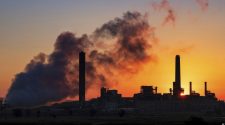Automotive and industrial emissions fill the air with nitrogen, sulphur dioxides, and “black carbon,” the latter of which includes tiny particles that penetrate deep into the lungs. Over the past days, levels in Delhi have exceeded 10 times what the U.S. Environmental Protection Agency deems safe. (The idea that any level is “safe” is disputed, as even very low levels have been found to cause disease.) The effect is lethal, in India and beyond. Air pollution is the leading cause of premature death in much of the world. It already accounts for around a third of deaths from lung cancer and heart disease, according to the World Health Organization. A Lancet study found that particulate matter alone killed some 1.9 million people in Asia in 2015. One in 20 deaths in China is due to bad air.
The episodes, which are getting worse over time, presage crises in others in urban areas around the world. Half of the world’s cities do not meet the World Health Organization’s safety standards. Even for people who can afford to stay indefinitely indoors, that way of living has its own consequences to health, from sedentary behavior to social isolation.
The Delhi air crisis is reaching peak severity in the same week that the U.S. formally notified the United Nations that it would be the only country among 196 signatories to withdraw from the Paris Climate Accord. In the 2016 agreement, almost every country in the world committed to establishing its own emissions target. Secretary of State Mike Pompeo said in a statement yesterday that the commitment to sustainable energy posed an “economic burden.”
Year after year, the economic effects of the world’s current environmental path are bearing out in Delhi. Flights are canceled and schools closed. Car owners are limited to driving only on certain days. Construction is stalled, and hospitals are flooded with disease, as they will be flooded with chronic effects in coming decades. People miss work, become disabled, and exit the workforce. They consume more medical care and rely on safety nets.
This is the economic future that the status quo invites. Even for the world’s wealthiest people, who may be able to guarantee their personal air and food supply, their stability will be contingent on the billions of people around the world who still have to go outside.
We want to hear what you think about this article. Submit a letter to the editor or write to [email protected].


















